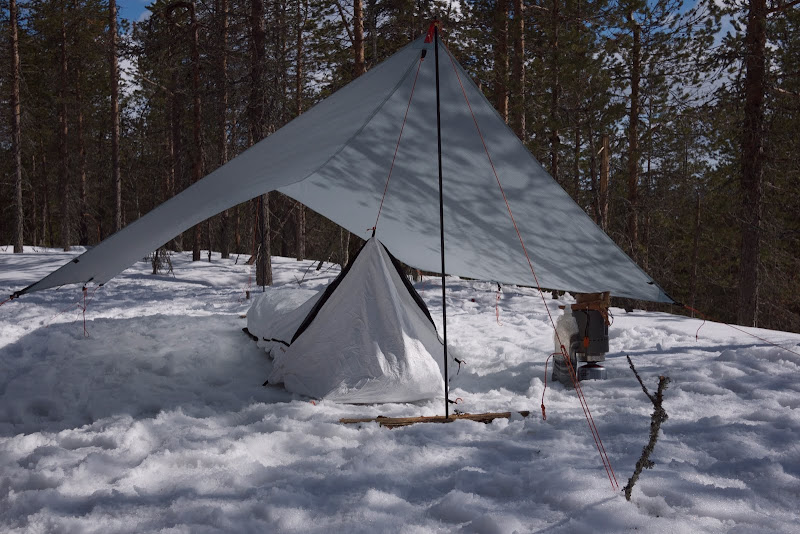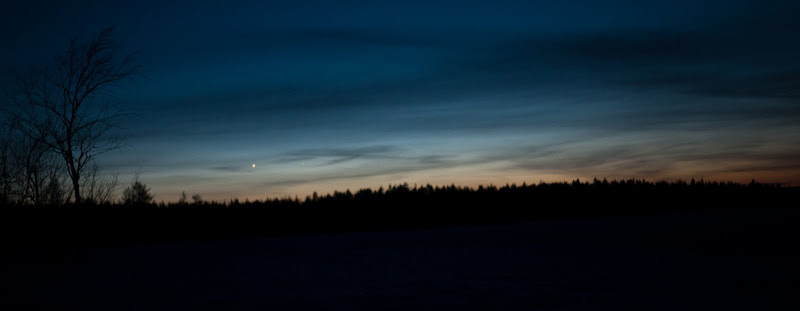Last weekend I finally managed to get away on my first trip since Vålådalen, and it included a couple of firsts: I slept the first time this year not under a tarp but in a Lightheart Gear Solo tent, I used a ULA Epic backpack, and I paddled a part of the trip with my Alpaca raft. I'll deal with most of the other gear in a separate article, in this one I want to look more at the trip and the packraft. Finally, instead of my DSLR I used a Panasonic Lumix DMC-TZ10, a fine little camera which geo-tags all photos automatically, and has a Full HD video function, as you'll see!
a fine little camera which geo-tags all photos automatically, and has a Full HD video function, as you'll see!
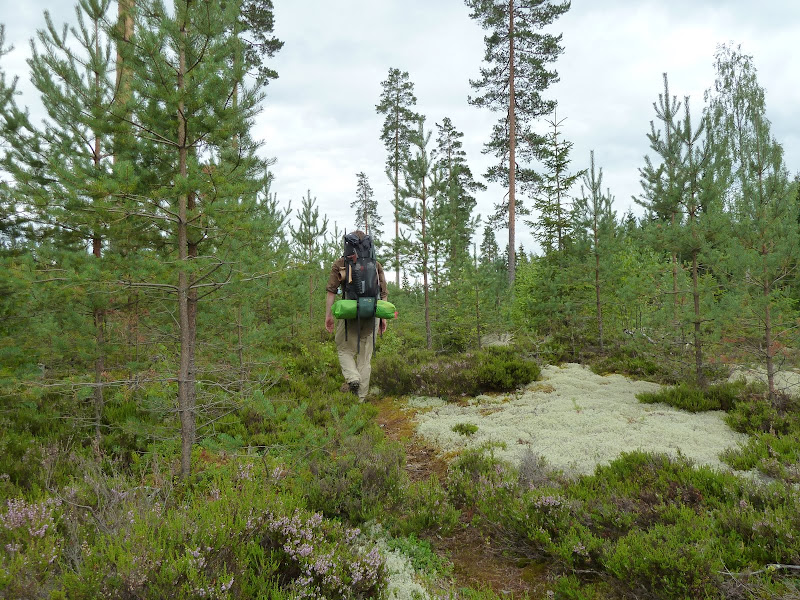
The idea was to walk 25 km from Kuru to the Helvetinjärvi Nationalpark, camp at the Heinälahti campsite, and in the morning paddle the 24 km Haukkajoen Reitti back to Kuru. The first part of the plan, walking from Kuru to Heinälahti, was pretty uneventful. It was cloudy and rained a bit every now and then, and I was happy about that - the six weeks of heat we had here in Finland are completely unbearable; and anyone who tells me there is no such thing as climate change I tell to wake up.

Passed by some fields as I left Kuru.
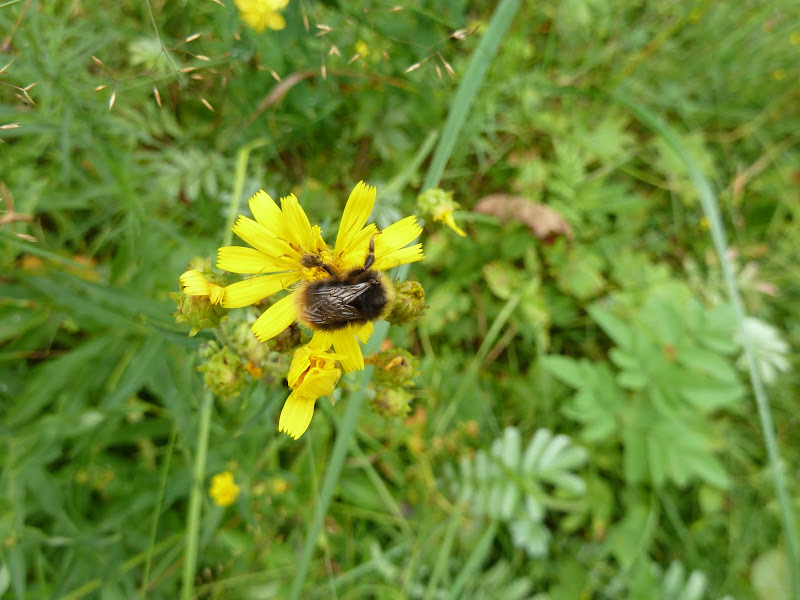
Bumblebee enjoying sweet nectar.
I've walked this stretch so often that I didn't even bother with a map anymore, I know it so well by now that I just enjoyed the scenery along the trail and was happy to pick nature's offerings where they presented themselves.
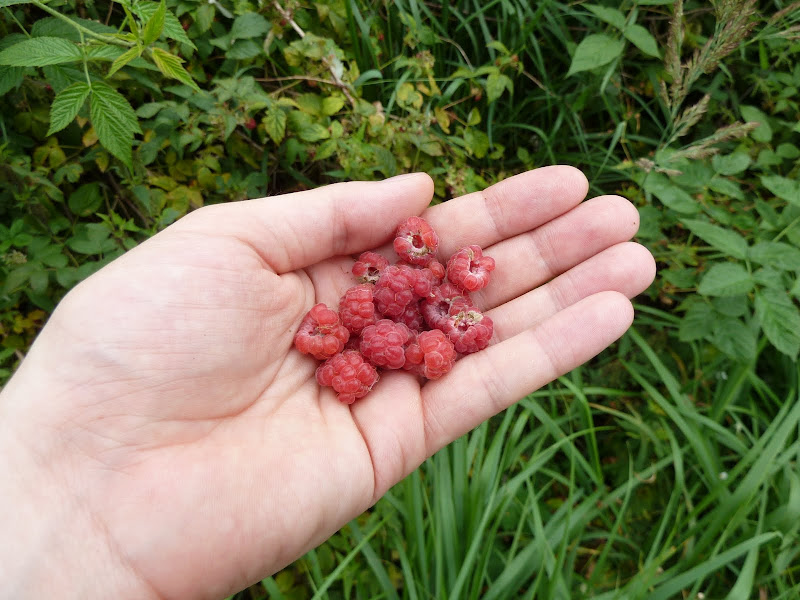
Raspberries.
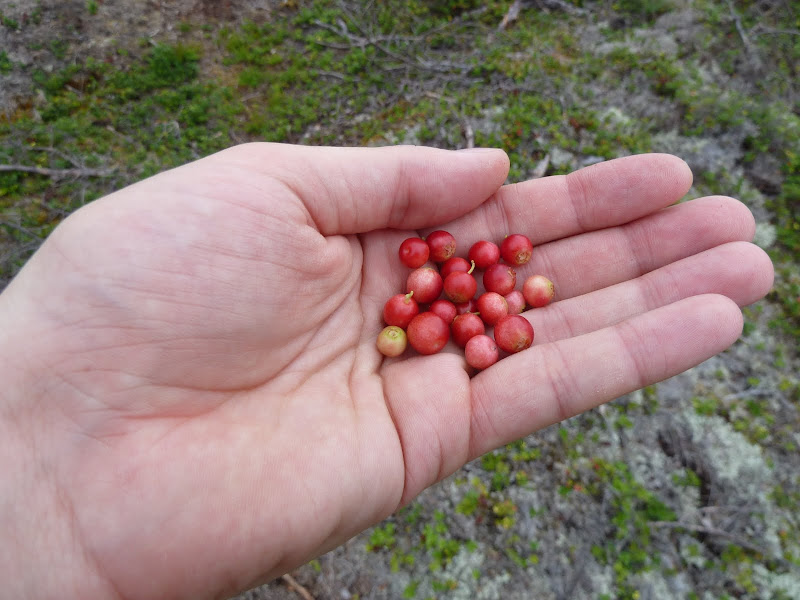
Lingonberries.

Forest strawberries.
Even if I wasn't super quick and made a few detours (one spring was completely dry so I asked some people who just arrived at their Mökki [Finnish for summer cottage] if I could get some water from their spring, and I took a one kilometer detour as I went to check out a place where I would come by the next day) I arrived at Heinälahti at 19.30 o'clock.
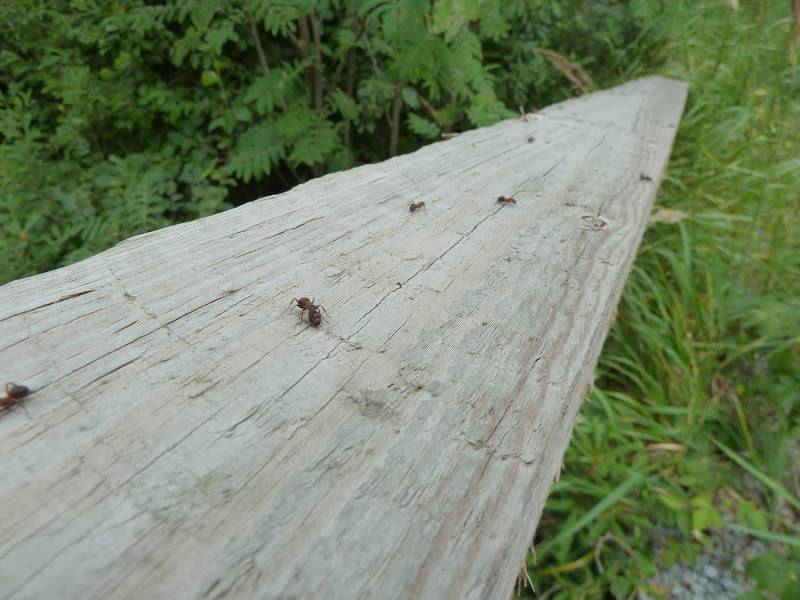
Ants using a man-made bridge to cross the river.
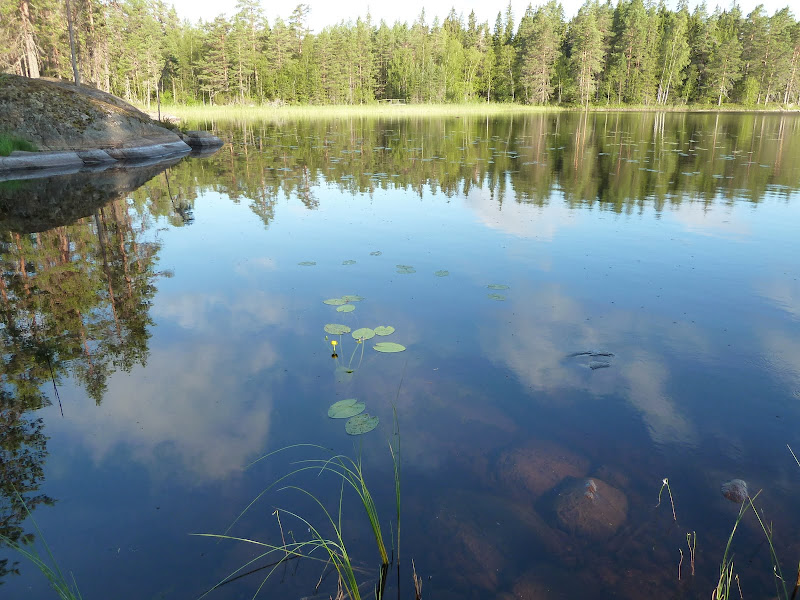
Early evening at camp.
By the time I arrived the sun came out once in a while, so I stripped down naked and took a swim in the lake. There was no one around, and knowing that most Finns won't arrive too late at camp, I had no worries. I then walked to the woodshed to pick up two logs, grabbed my Gränsfors Bruks Mini Hatchet and started to chop wood for my Bushbuddy Ultra. It was great fun, and because I "forgot" to take pegs I looked for some dead wood which, with the help of hatchet and puukko, were transformed into kickass pegs for my tent. I had it pitched in a couple of minutes, and started to roll out my mat and let my quilt loft, while I continued to chop wood and brew water for my cacao.

Home, Sweet Mosquito-free Home!
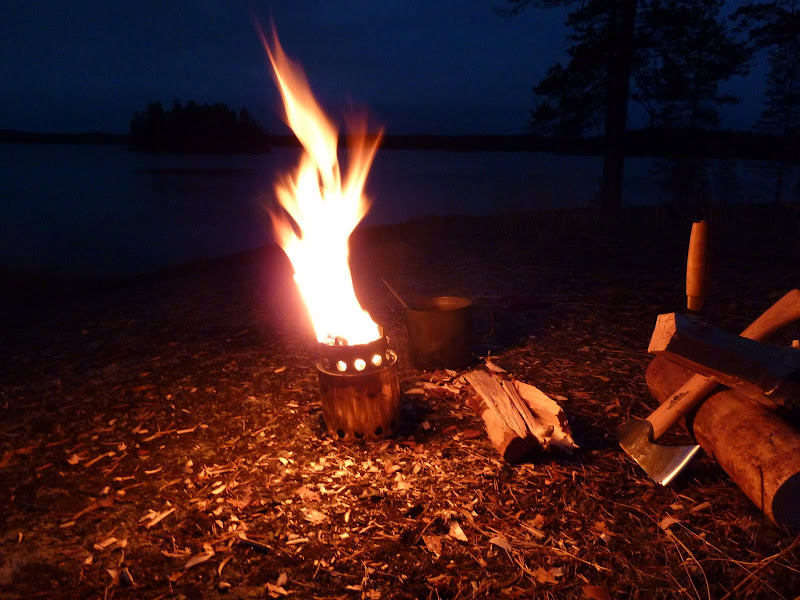
Outdoor Pyrotechnics.
I slept OK. I tried a new mat, which was great though if you roll it out over some tree roots (somehow at the campsite there was not a single spot found to be rootless) you'll only get so much sleep. At about 4.30 o'clock in the morning the sun started to rise, so I got up to take a good look at it, listen to the bird calls and enjoy the tranquility.

What's The Story, Morning Glory.
After half an hour I decided to catch a bit more sleep, and around eight I got up to enjoy the new day, eat breakfast and drink coffee before I set out to packraft.
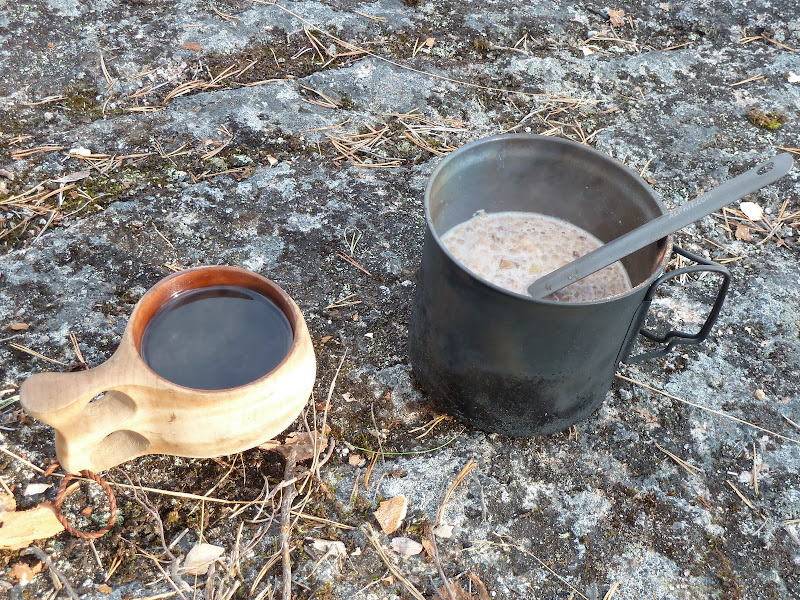
Delicious breakfast.
After breakfast I set out to inflate the packraft, pack up, and start paddling. But I wouldn't be me if I didn't use my time to to share with you my first strokes (OK, not really my first strokes, as I was paddling a few times before on lakes at home & in Helsinki, but it was the first time out backpacking!) in a packraft. Thus lean back and enjoy the video.
I was fairly optimistic with my estimation of speed in the packraft. Now, six weeks of heat meant the lake, and hence the river, was about 50 cm lower than usual, and so I needed to walk all the "white water" sections as they were too low to float through. Add in an unbelievable amount of beaver dams (I recall at least six, and plenty of downed trees which obstructed the river) and my speed must have been something like 2 km per hour - I was calculating at least with four, if not five.
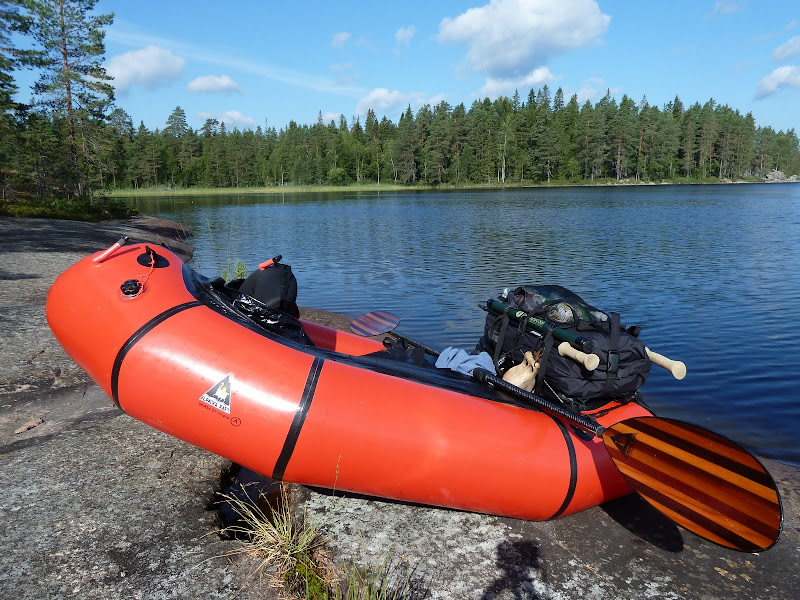
Ready!
My last bus back to Tampere went at 17.05 o'clock, and with a speed of 2 km per hour I won't make it before ten to Kuru - far to late even for hitchhiking. So, after 8 km of packrafting I sadly packed up the raft and paddle, and started the walk back to Kuru. I decided to walk the road and not the trail, as I was hoping to be able to hitch a ride to Kuru - because 17 km in two and half hours were just too much. Happily a young boy on a Quad gave me a short lift, and a friendly lady gave me another short lift to the bus stop; but I still walked 14 km in two and half hours - something that I felt as soon as I arrived at home.
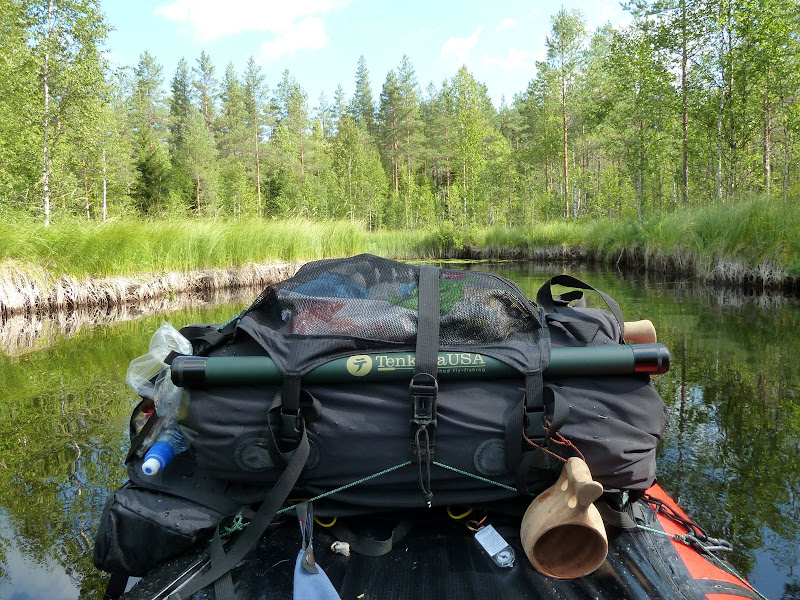
Paddling.
So in conclusion, my thoughts on packrafting: It's awesome and opens up completely new possibilities to enjoy the outdoors and go new routes. For me, who has been enjoying Roman Dial's adventures, was happy to see that Jörgen from Fjäderlätt also packrafts in Sweden, and looked as Phil and Colin introduced packrafting to the UK last year, I knew that I will get one for this summer.
I got the Alpaca raft, with a Spraydeck. The weight is 2513 g, and the Sawyer paddle is 860 g, which is 3373 g together. As you see in the video, I did not bother with a life vest. That might be for some a strict no-go, but I don't have one and also didn't find a light enough life vest. I also knew where I was going and what was to be expected, and therefore knew that a life vest won't be necessary. If you're more security conscious than me, and will paddle in proper white water, take a vest. Back to the raft. I intend to go to Lapland and paddle in some decent rivers this rest-of-summer or autumn, depending on my time (We remember: Hendrik does a Wilderness Guide education and works as well). I think I prefer the white water, fast flowing rivers overs the lakes, so a trip to Lapland seems in order; I'm thinking about the Karhunkierros or going down the river along the Finnish-Swedish border...
The packraft is of course ideally suited to go paddling on the lake - it is what I do in the evenings after work, the lake being 150 m from my front door. But rivers mean you can lean back a bit more, paddle a bit less, be lazy & enjoy the landscape. As you saw, I went barefoot in the raft, but later, as the carrying increased, put the shoes back on. I didn't mind the wet shoes or pants, it was quite hot and thus a good way of cooling down. Thanks to the Spraydeck there was not much water in the raft, and once I improve my paddling style there shouldn't be too much water on top of it either. I also realized that speed will (likely) only be high on fast flowing rivers. If you have to paddle, calculate with two or three kilometers per hour, likely less.
Well, that are my initial thoughts after my first trip. I enjoyed myself immensely, and am looking forward to more packrafting in the future, it really is a great way to enjoy the outdoors and see nature from a very different perspective. I hope this was a good first look into packrafting for those interested, and shows that with the help of a little raft and some willingness to try something new, one can experience the outdoors in new ways!
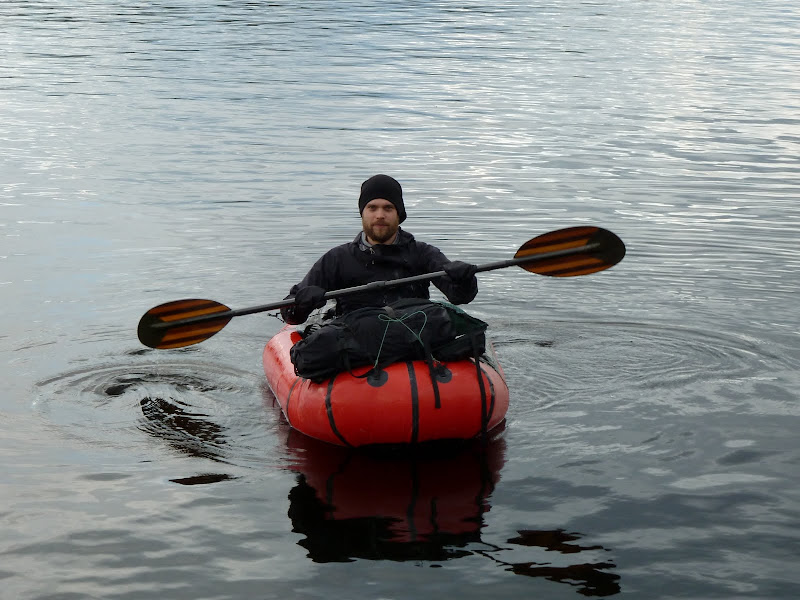
Yours truly, proud like a god in his packraft =)
Remember, you now can become a Fan of Hiking in Finland and Nordic Lightpacking on Facebook!
The idea was to walk 25 km from Kuru to the Helvetinjärvi Nationalpark, camp at the Heinälahti campsite, and in the morning paddle the 24 km Haukkajoen Reitti back to Kuru. The first part of the plan, walking from Kuru to Heinälahti, was pretty uneventful. It was cloudy and rained a bit every now and then, and I was happy about that - the six weeks of heat we had here in Finland are completely unbearable; and anyone who tells me there is no such thing as climate change I tell to wake up.
Passed by some fields as I left Kuru.
Bumblebee enjoying sweet nectar.
I've walked this stretch so often that I didn't even bother with a map anymore, I know it so well by now that I just enjoyed the scenery along the trail and was happy to pick nature's offerings where they presented themselves.
Raspberries.
Lingonberries.
Forest strawberries.
Even if I wasn't super quick and made a few detours (one spring was completely dry so I asked some people who just arrived at their Mökki [Finnish for summer cottage] if I could get some water from their spring, and I took a one kilometer detour as I went to check out a place where I would come by the next day) I arrived at Heinälahti at 19.30 o'clock.
Ants using a man-made bridge to cross the river.
Early evening at camp.
By the time I arrived the sun came out once in a while, so I stripped down naked and took a swim in the lake. There was no one around, and knowing that most Finns won't arrive too late at camp, I had no worries. I then walked to the woodshed to pick up two logs, grabbed my Gränsfors Bruks Mini Hatchet and started to chop wood for my Bushbuddy Ultra. It was great fun, and because I "forgot" to take pegs I looked for some dead wood which, with the help of hatchet and puukko, were transformed into kickass pegs for my tent. I had it pitched in a couple of minutes, and started to roll out my mat and let my quilt loft, while I continued to chop wood and brew water for my cacao.
Home, Sweet Mosquito-free Home!
Outdoor Pyrotechnics.
I slept OK. I tried a new mat, which was great though if you roll it out over some tree roots (somehow at the campsite there was not a single spot found to be rootless) you'll only get so much sleep. At about 4.30 o'clock in the morning the sun started to rise, so I got up to take a good look at it, listen to the bird calls and enjoy the tranquility.
What's The Story, Morning Glory.
After half an hour I decided to catch a bit more sleep, and around eight I got up to enjoy the new day, eat breakfast and drink coffee before I set out to packraft.
Delicious breakfast.
After breakfast I set out to inflate the packraft, pack up, and start paddling. But I wouldn't be me if I didn't use my time to to share with you my first strokes (OK, not really my first strokes, as I was paddling a few times before on lakes at home & in Helsinki, but it was the first time out backpacking!) in a packraft. Thus lean back and enjoy the video.
I was fairly optimistic with my estimation of speed in the packraft. Now, six weeks of heat meant the lake, and hence the river, was about 50 cm lower than usual, and so I needed to walk all the "white water" sections as they were too low to float through. Add in an unbelievable amount of beaver dams (I recall at least six, and plenty of downed trees which obstructed the river) and my speed must have been something like 2 km per hour - I was calculating at least with four, if not five.
Ready!
My last bus back to Tampere went at 17.05 o'clock, and with a speed of 2 km per hour I won't make it before ten to Kuru - far to late even for hitchhiking. So, after 8 km of packrafting I sadly packed up the raft and paddle, and started the walk back to Kuru. I decided to walk the road and not the trail, as I was hoping to be able to hitch a ride to Kuru - because 17 km in two and half hours were just too much. Happily a young boy on a Quad gave me a short lift, and a friendly lady gave me another short lift to the bus stop; but I still walked 14 km in two and half hours - something that I felt as soon as I arrived at home.
Paddling.
So in conclusion, my thoughts on packrafting: It's awesome and opens up completely new possibilities to enjoy the outdoors and go new routes. For me, who has been enjoying Roman Dial's adventures, was happy to see that Jörgen from Fjäderlätt also packrafts in Sweden, and looked as Phil and Colin introduced packrafting to the UK last year, I knew that I will get one for this summer.
I got the Alpaca raft, with a Spraydeck. The weight is 2513 g, and the Sawyer paddle is 860 g, which is 3373 g together. As you see in the video, I did not bother with a life vest. That might be for some a strict no-go, but I don't have one and also didn't find a light enough life vest. I also knew where I was going and what was to be expected, and therefore knew that a life vest won't be necessary. If you're more security conscious than me, and will paddle in proper white water, take a vest. Back to the raft. I intend to go to Lapland and paddle in some decent rivers this rest-of-summer or autumn, depending on my time (We remember: Hendrik does a Wilderness Guide education and works as well). I think I prefer the white water, fast flowing rivers overs the lakes, so a trip to Lapland seems in order; I'm thinking about the Karhunkierros or going down the river along the Finnish-Swedish border...
The packraft is of course ideally suited to go paddling on the lake - it is what I do in the evenings after work, the lake being 150 m from my front door. But rivers mean you can lean back a bit more, paddle a bit less, be lazy & enjoy the landscape. As you saw, I went barefoot in the raft, but later, as the carrying increased, put the shoes back on. I didn't mind the wet shoes or pants, it was quite hot and thus a good way of cooling down. Thanks to the Spraydeck there was not much water in the raft, and once I improve my paddling style there shouldn't be too much water on top of it either. I also realized that speed will (likely) only be high on fast flowing rivers. If you have to paddle, calculate with two or three kilometers per hour, likely less.
Well, that are my initial thoughts after my first trip. I enjoyed myself immensely, and am looking forward to more packrafting in the future, it really is a great way to enjoy the outdoors and see nature from a very different perspective. I hope this was a good first look into packrafting for those interested, and shows that with the help of a little raft and some willingness to try something new, one can experience the outdoors in new ways!
Yours truly, proud like a god in his packraft =)
Remember, you now can become a Fan of Hiking in Finland and Nordic Lightpacking on Facebook!

